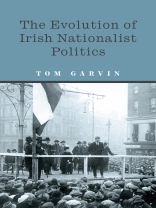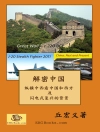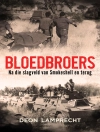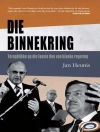Professor Tom Garvin’s classic work studies the growth of nationalism in Ireland from the middle of the eighteenth century to modern times.
It traces the continuity of tradition from earlier organisations, such as the United Irishmen and the agrarian Ribbonmen of the eighteenth century, through the followers of Daniel O’Connell, the Fenians and the Land League in the nineteenth century to the Irish political parties of today, including Sinn Féin, Fianna Fáil, Labour Party and Fine Gael.
The dual nature of Irish nationalism is shown in sharp focus. Despite the secular and liberal leanings of many Irish leaders and theoreticians, their followers were frequently sectarian and conservative in social outlook. This book demonstrates how this dual legacy has influenced the politics of modern Ireland.
The Evolution of Irish Nationalist Politics: Table of Contents
– Irish parties and Irish politics
The Irish republic: post-colonial politics in a western European state
Political culture and political organisation
Geography, economics and method
– The origins of Irish popular politics
Roots of Irish popular nationalism
The beginnings of urban radical political organisation, 1750–1800
Agrarianism, religion and revolution, 1760–1800
– The development of nationalist popular politics, 1800–48
Secret societies before the Famine: the rise of Ribbonism
Political mobilisation in pre-Famine nationalist Ireland
– Secret societies and party politics after the Famine
The social background
Electoral politics after the Famine
The recrudescence of republicanism: Fenianism and the Agrarians
The IRB and Irish politics after the Land War
– Agrarianism, nationalism and party politics, 1874–95
Political mobilisation and the agrarian campaign
The development of the Irish National League
The Parnell split: the collapse of the Irish National League
– The reconstruction of nationalist politics, 1891–1910
The rebuilding of the parliamentary party
The rise of the Hibernians
– The new nationalism and military conspiracy, 1900–16
The development of cultural nationalism and the origins of Sinn Féin
Fenians, Volunteers and insurrection
– Elections, revolution and civil war, 1916–23
The rise of Sinn Féin
The electoral landslide of December 1918
The Republic of Ireland, 1919–23
– The origins of the party system in independent Ireland
The ancestry of the Irish party system
The legitimation of the state and the building of political parties
– An analysis of electoral politics, 1923–48
Parties and elections in the Irish Free State
Turnout, 1922–44
Sinn Féin III/Fianna Fáil
Cumann na n Gaedheal/Fine Gael
The Labour Party
The farmers’ parties
The break-up of the Treaty party system
– The roots of party and government in independent Ireland
The central place of party in Irish politics
Party and the physical force tradition
The evolution of the Irish state
Party and government in independent Ireland
– Some comparative perspectives
Liberal democracy
The party system in comparative perspective
O autorze
Tom Garvin is Emeritus Professor of Politics at University College Dublin and an honorary research fellow at IBIS. His books include Nationalist Revolutionaries in Ireland (1987), 1922: The Birth of Irish Democracy (1996) and Preventing the Future: Why was Ireland so poor for so long? (2004) . He is also the author of many articles and chapters on Irish and comparative politics. He is an alumnus of the Woodrow Wilson International Center for Scholars, Washington D.C., and a Member of the Royal Irish Academy. He has taught at the University of Georgia, Colgate University and Mount Holyoke College. His biography of Seán Lemass, Judging Lemass, was published by the Royal Irish Academy in 2009.












